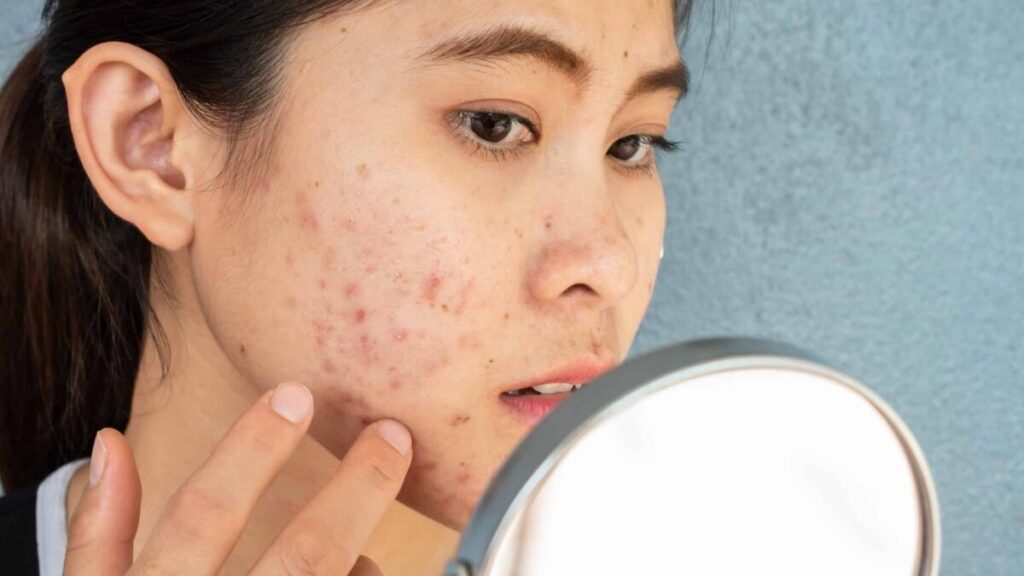Acne, often regarded as a quintessential teenage rite of passage, is more than just an occasional pimple that pops up before a big event. Active acne is a persistent skin condition that affects millions worldwide, and contrary to popular belief, it’s not just confined to adolescents. Singapore, with its tropical climate, sees a fair share of individuals grappling with active acne. This article delves deep into understanding active acne, its formation, types, and the most sought-after non-surgical active acne treatments in Singapore.
What is Active Acne?
Active acne is a skin condition where oil and dead skin cells clog hair follicles, leading to a range of skin manifestations such as blackheads, pimples, and even deep, painful cysts. Acne predominantly affects areas of the skin with a high number of oil glands, such as the face, upper chest, and back.
How Does Active Acne Form?
The formation of acne is a multifaceted process involving the hair follicles and sebaceous glands. Typically, these glands produce sebum, an oily substance that lubricates the skin and hair. However, factors like hormonal changes can stimulate excess sebum production. When this excess sebum mixes with dead skin cells, it can lead to a clogged pore. The clogged pore becomes a breeding ground for the bacterium Propionibacterium acnes, resulting in inflammation and the formation of acne lesions.
Different Types of Acne
-
Blackheads and Whiteheads:
Often known as comedones, blackheads and whiteheads are the most common types of acne. Blackheads, or open comedones, appear as small black or brownish spots on the skin. Their color is due to the exposed sebum oxidizing, not dirt as commonly thought. Whiteheads, or closed comedones, are small bumps protruding from the skin. They are filled with oil and dead skin cells and remain white or skin-colored because the trapped sebum doesn’t get exposed to air.
-
Papules and Pustules:
Papules are tiny red bumps that often feel sore or tender. They arise when the walls around the pores break down due to inflammation. Pustules, on the other hand, are similar in appearance but have a white tip in the center, caused by a buildup of pus.
-
Nodules and Cysts:
These are larger, painful acne lesions that develop deep within the skin. Nodules are hard, painful lumps beneath the skin’s surface, while cysts are pus-filled lumps that look similar to boils. Cysts are the most severe form of acne and carry a high risk of leaving permanent scars.
Non-Surgical Active Acne Treatments in Singapore
While there are myriad treatments available globally, focusing on non-surgical active acne treatments in Singapore, a few have gained prominence due to their efficacy.
Topical Creams:
Topical treatments are applied directly to the affected areas and are typically the first line of defense against acne. These creams and gels might contain ingredients like benzoyl peroxide, salicylic acid, or retinoids. They work by reducing oil production, accelerating skin cell turnover, and curbing bacterial growth.
Oral Medications:
For moderate to severe cases or when topical treatments don’t yield desired results, doctors might prescribe oral medications. Antibiotics, combined oral contraceptives for females, and isotretinoin are some of the commonly prescribed drugs.
Pico Laser:
One of the revolutionary non-surgical active acne treatments in Singapore is the Pico laser. This ultra-short pulse laser breaks down pigmentation and boosts collagen production. It not only addresses active acne but also reduces acne scars and rejuvenates the skin.
Carbon Laser Peel:
Popularly known as the ‘Hollywood Peel’, the carbon laser peel is a two-step process. First, a layer of liquid carbon is applied to the skin, which penetrates deep into the pores. Next, a laser blasts away the carbon, taking with it dead skin cells, contaminants, and oil. This treatment reduces sebum production, curtails bacterial growth, and provides a glowing complexion.
In conclusion, while active acne can be a distressing condition, understanding its types and the plethora of effective non-surgical treatments available, especially in hubs like Singapore, can pave the way for clearer, healthier skin.
About Author
You may also like
-
Why Implantable Collamer Lens Surgery is a Game-Changer for Eye Care in London
-
Lift Your Look: Face Lifting Techniques for Youthful Skin
-
Your Comprehensive Guide to NDIS Plan: Tips and Advice
-
What to Expect During a Physio-Osteo Session
-
Customising First Aid Kits: Tailoring Supplies to Meet Unique Needs and Requirements


